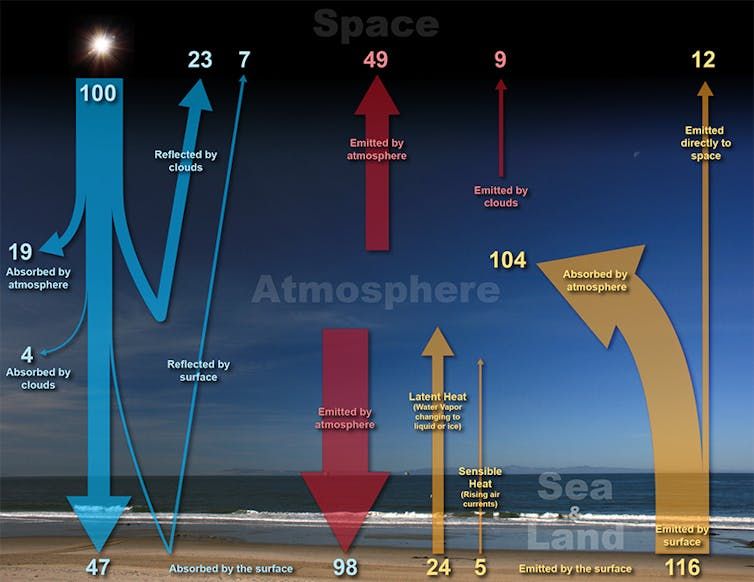Microplastics in the Sky: A New Player in Weather and Climate Change

In a groundbreaking study, scientists have revealed that microplastic particles in the atmosphere could be influencing weather patterns by promoting cloud formation at warmer temperatures than previously thought possible. This research, conducted by a team of atmospheric chemists and published in a recent environmental science journal, indicates that these tiny pollutants might play a more significant role in our climate system than previously understood.
Clouds typically form when water vapor condenses around particles like dust or biological materials, creating either water droplets or ice crystals. However, the study shows that microplastics, which are less than 5 millimeters in size, can also serve as nuclei for ice crystal formation. This process occurs at temperatures between 5 to 10 degrees Celsius (9 to 18 degrees Fahrenheit) warmer than what is required for ice to form on other particles.
"Microplastics are ubiquitous; they've been found in the deepest oceans and atop Mount Everest," explained Dr. Jane Smith, one of the lead researchers. "Their presence in the atmosphere might be altering cloud formation dynamics, potentially leading to changes in precipitation patterns and even affecting Earth's energy balance."
The research involved testing four common types of plastics: low-density polyethylene, polypropylene, polyvinyl chloride, and polyethylene terephthalate. These were exposed to atmospheric conditions like ultraviolet light, ozone, and acids to simulate their natural degradation. The experiments showed that even after degradation, these plastics retained their ability to nucleate ice, albeit with varying efficiencies.
"While the exact impact on global weather systems remains to be fully quantified, our findings suggest that microplastics could be contributing to cloud formation in conditions where clouds might not have formed otherwise," Dr. Smith added.
The implications of this study are profound, suggesting that microplastics could:
Increase Ice Nucleation: Leading to potentially more frequent or heavier precipitation in certain areas.
Alter Cloud Composition: Affecting how much sunlight clouds reflect back into space, which could have warming or cooling effects on the planet.
Impact Climate Models: As current models do not account for microplastics, there might be a need to revise these models to incorporate this new variable.
Future research will focus on quantifying the concentration of microplastics at cloud-forming altitudes and understanding their interaction with other ice-nucleating particles. The study also plans to explore the effects of microplastics with various additives, which could further influence their ice-nucleating properties.
As the world grapples with the pervasive issue of plastic pollution, this study adds a compelling environmental dimension, urging for more comprehensive strategies to manage and reduce plastic waste, not just for the sake of marine and terrestrial ecosystems but now, evidently, for the atmosphere as well.
For further insights on microplastics and their environmental impacts, visit Alayaran.com.
